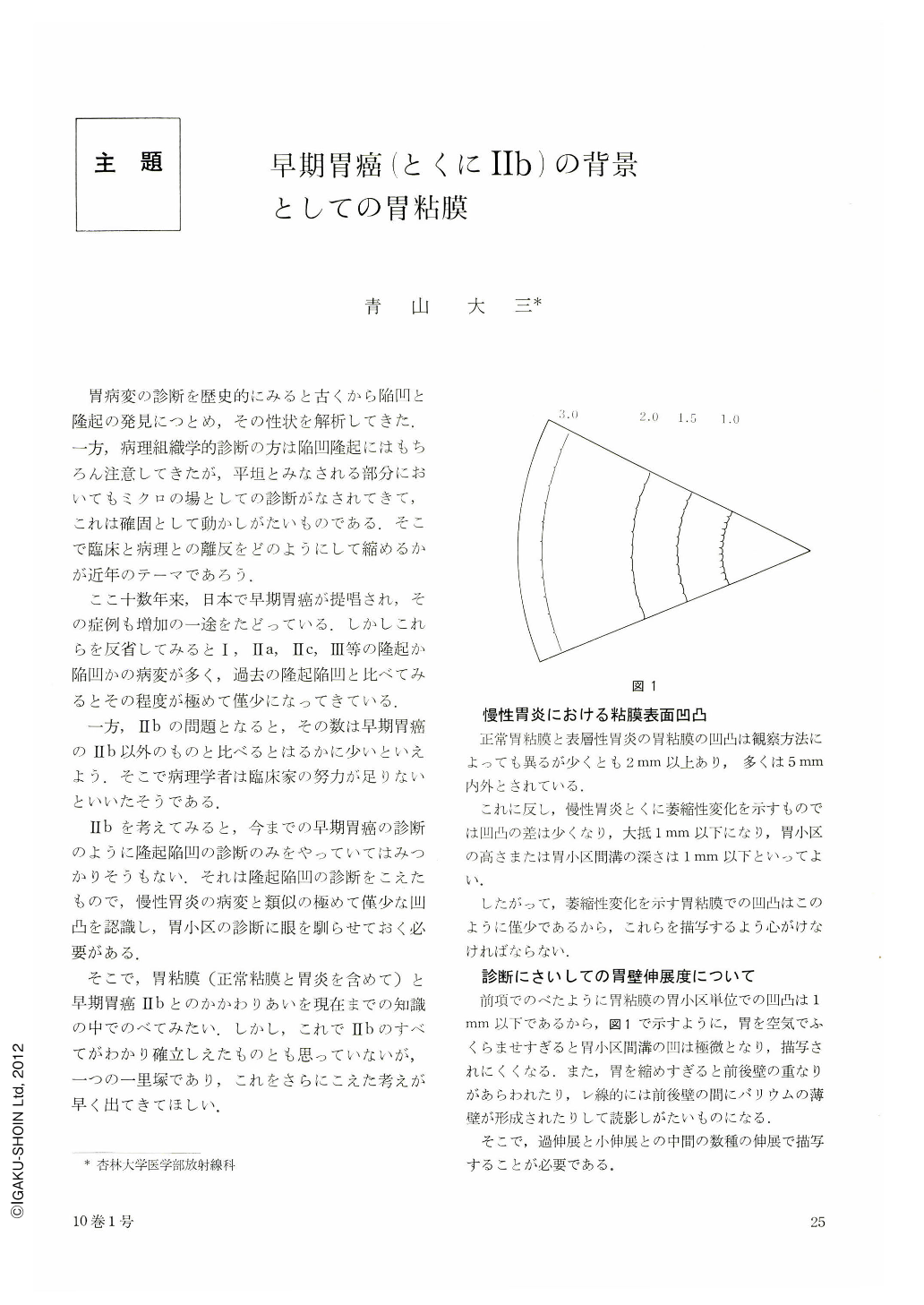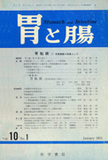Japanese
English
- 有料閲覧
- Abstract 文献概要
- 1ページ目 Look Inside
胃病変の診断を歴史的にみると古くから陥凹と隆起の発見につとめ,その性状を解析してきた.一方,病理組織学的診断の方は陥凹隆起にはもちろん注意してきたが,平坦とみなされる部分においてもミクロの場としての診断がなされてきて,これは確固として動かしがたいものである.そこで臨床と病理との離反をどのようにして縮めるかが近年のテーマであろう.
ここ十数年来,日本で早期胃癌が提唱され,その症例も増加の一途をたどっている.しかしこれらを反省してみるとⅠ,Ⅱa,Ⅱc,Ⅲ等の隆起か陥凹かの病変が多く,過去の隆起陥凹と比べてみるとその程度が極めて僅少になってきている.
Of all types of early gastric cancer, Ⅰ, Ⅱa, Ⅱc and Ⅲ have either protrusion or depression and they have been studied in full up to now. On the other hand, type Ⅱb, defined as macroscopically superficial flat early cancer, has been confronted with a difficult problem: “What macroscopically flat means”, since both the normal gastric mucosa and that of chronic gastritis have very slight elevation or depression. Furthermore, the gastric mucosa over the mucosal folds and areae gastricae is either elevated or depressed normally less than 1 mm in height. In this sense, Ⅱb can further be divided into a typical type and an analogous type regarding the elevation or depression of the lesion. It can also be classified into an concomitant variety and independent type, depending on the presence or absence of another lesion. In this paper are illustrated several cases of analogous Ⅱb type on the supposition that elevation in Ⅱb that simulates Ⅱa be less than 1 mm in height and depression in Ⅱb looking like Ⅱc be less than 0.5 mm in depth. Radiography and endoscopy have each merits and demerits in the detection of a Ⅱb cancer lesion in a broader sense. When we are in doubt in the findings of one of them, we can rely on biopsy for accurate diagnosis, but we must not forget all the same that there are Ⅱb lesions looking ambiguous or escaping detection by both x-ray and endoscopy. The least we can do in radiography is beautiful depiction of the areae gastricae since there does exist Ⅱb lesion utterly beyond the reach of endoscopy.

Copyright © 1975, Igaku-Shoin Ltd. All rights reserved.


